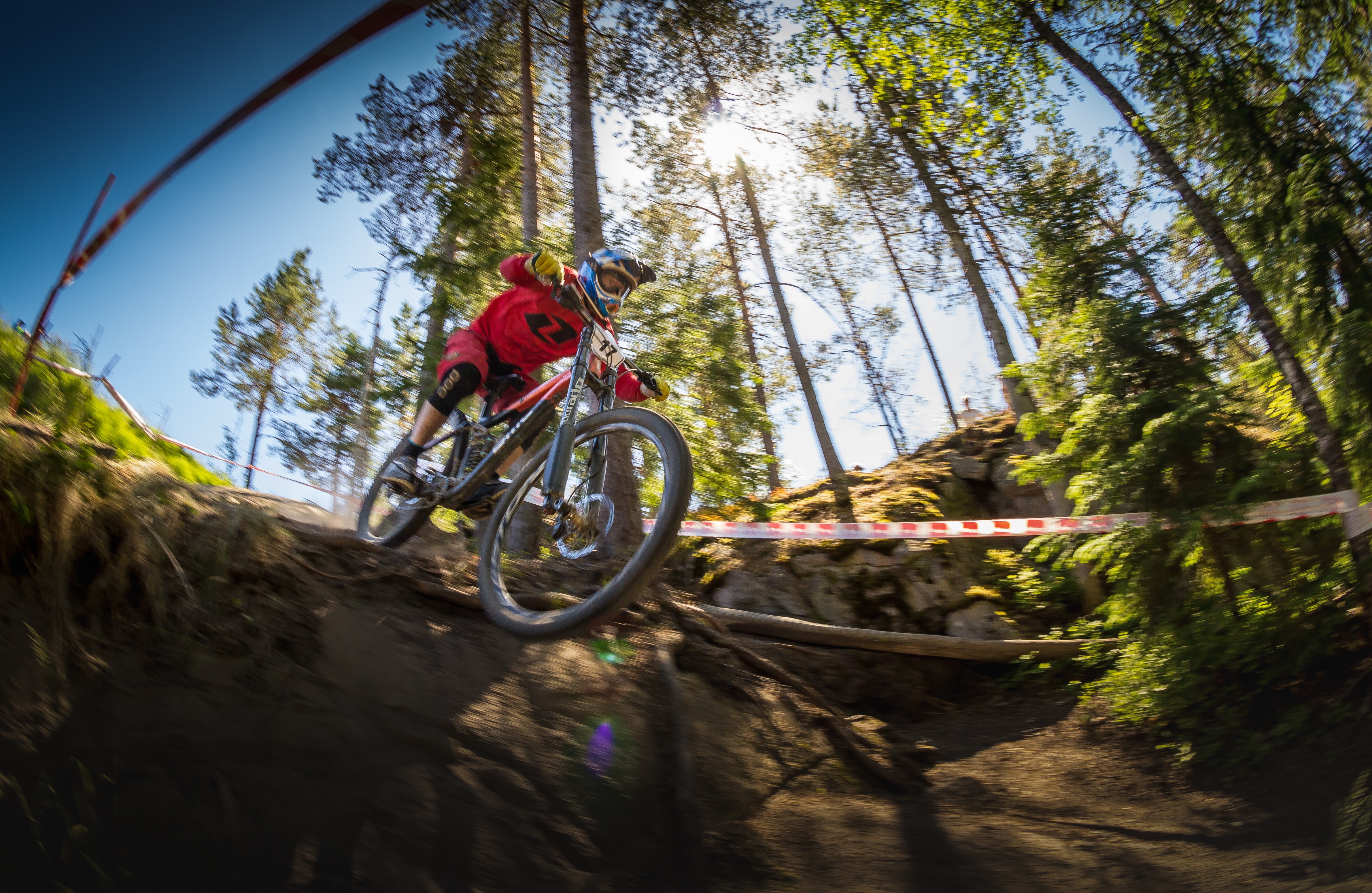When going out on a mountain trail, the weight you carry can impact the quality and length of your ride.
You need to be smart when it comes to the gear that you bring to prevent early exhaustion.
This means that you need to consider the weight of the biggest piece of equipment you have: your mountain bike itself.
Why Does Weight Matter?

For casual riders or weekend warriors, mountain bike weight might not matter that much.
As long as the bike isn’t too heavy or cumbersome to ride or lift while on the trail, comfort might be more important.
In fact, a heavier bike would be preferable because weight adds more stability and safety during a ride.
For professional bikers, however, mountain bike weight matters because it affects speed and maneuverability.
A lighter bike is faster, easier to maneuver, and can climb steep trails with less effort.
Bike weight matters depending on the type of rider you want to be. If you’re into riding steep trails, a lighter bike is better suited for you. However, if you prefer gently sloping terrain or downhill courses, a heavier bike would be the better option.
Average Weight of a Mountain Bike

While mountain bike weight can differ somewhat among different manufacturers, here are the average weights of different mountain bike styles:
- All Mountain: 30 lbs
- Downhill: 35 lbs
- Hardtail: 26-28 lbs
- Full suspension: 30-34 lbs
- XC: 26-28 lbs
- 29er: 28-30 lbs
Before deciding on a particular bike style, it is best to check with the manufacturers to see the type of bike.
In general, mountain bikes in the same style will fall into the average weight range even if they are produced by different makers.
Take note that these average weights will refer to the stock components of the bike (i.e., frame, wheels, drivetrain).
Most professional shops will allow you to weigh the bike in-store to get the base weight of the setup.
This will allow you to decide how you will upgrade your bike in terms of performance and increasing or reducing the weight as needed.
Which Parts Affect Mountain Bike Weight?

Aside from the bike frame, specialized components can add weight to your mountain bike. Most riders upgrade their stock bikes to increase their bike’s safety and performance.
Wheels add the most weight to any bike setup, accounting for as much as a third of the total weight.
If you regularly bike in tough or rough terrain, you will need to add heavy wheels for a safe and smooth ride.
Your fork can also be a factor when it comes to added weight. A large fork adds grip and improves suspension, reducing harsh impacts on your bike while riding.
Finally, consider your bike’s drivetrain. These small bits and pieces might not seem like much on their own, but they can quickly add up in weight as you add more to your bike.
Remember, a mountain bike is more than just the sum of its parts.
Don’t focus on the added weight of each component separately. Instead, consider the improved safety and performance of your total bike system.
When trying to decide whether or not to add a particular component to your setup, it is easier to understand the importance of your mountain bike as a whole.
Do Mountain Bikes Have Weight Limits?

Generally, mountain bikes are robust and durable given that they are used in rough terrain. However, most stock bikes have a recommended rider weight limit of 300 lbs.
To increase the safety of a mountain bike for heavier riders, thicker tires must be used.
Tires with a smaller circumference (26.5” to 27”) are stronger compared to larger tires (29”).
The back tire should also have at least 24 spokes since they carry the majority of your weight.
For heavier riders, the bike frame must be made from either aluminum alloy or steel. While steel is stronger and more durable, the material is heavier.
Aluminum alloy frames are lighter and cheaper but are not as durable.
How to Make Your Mountain Bike Lighter

If you want to increase your riding speed, you need to lighten your bike. However, you should not do this at the cost of decreasing the safety and stability of your setup.
The only way to make your mountain bike faster and lighter is by investing in high-quality parts.
For the frame, the best material is carbon fiber in terms of strength, stability, and safety. However, this is also the most expensive type of frame.
This is why you will only see carbon fiber used for professional mountain bikes.
For the wheels, switching to tubeless wheels can remove as much as 1 lb from your setup.
For the drivetrain, switching from a 2x or 3x set up to a 1x can remove as much as 2 lbs when you add up the individual components.
While removing 5 lbs from your total bike weight might not sound like much, you can improve your movement speed by as much as 3%!
If you value speed and distance, 3% can make all the difference.
Conclusion
Overall, the mountain bike weight is not a critical factor for the average rider. While heavier bikes do pose a bit more challenge, they make up for it in stability and safety. In fact, heavier mountain bikes are better for beginners since they make learning biking skills safer.
Once you’ve improved your biking skills, you can consider upgrading to a lighter mountain bike.
Lighter mountain bikes are more suited for advanced riders who want to conquer more technical trails.
Get on your bike today and enjoy those trails!









